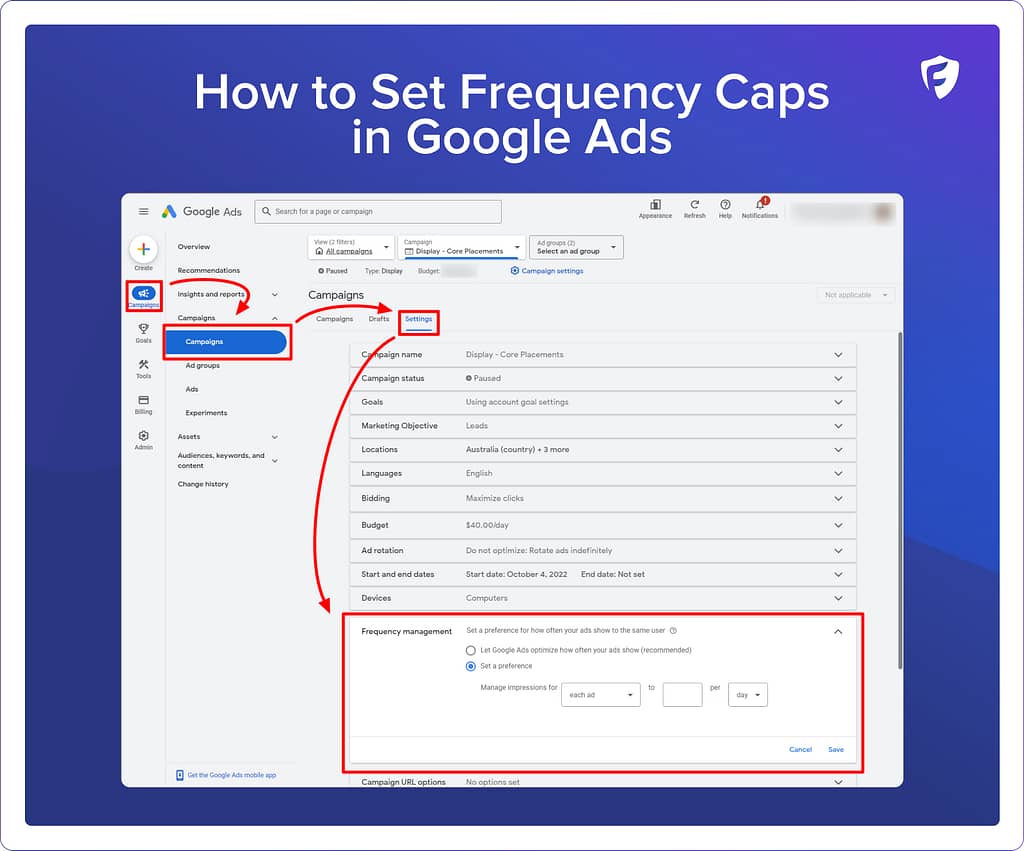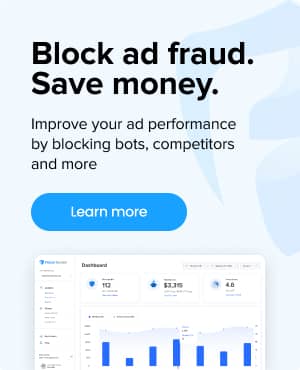What is frequency capping?
Frequency capping refers to the practice of limiting the number of times a specific advertisement is shown to an individual user over a set period. This is a critical concept in digital marketing, particularly for pay-per-click (PPC) advertising. It lowers the chance of ad fatigue, enhances user experience, and can optimize your ad budgets, particularly in platforms like Google Ads.
How does frequency capping work?
In platforms like Google Ads, frequency capping is implemented by setting a limit on ad impressions per user. This limit can be customized over different periods, such as per day, week, or month. For instance, setting a cap at three impressions per user per day ensures that your ad is not overexposed, maintaining its freshness and relevance.
Why is frequency capping important?
A well-implemented frequency cap respects the user’s online experience. By not inundating users with repetitive ads, marketers foster a more positive brand perception, essential in today’s user-centric digital landscape.
Key benefits of frequency capping in PPC campaigns
Frequency capping benefits your PPC campaigns in a few ways:
- Combatting Ad Fatigue: Repeated exposure to the same ad can lead to diminished user interest and decreased campaign effectiveness. Frequency capping mitigates this risk, preserving the ad’s impact and conversion potential.
- Enhancing User Experience: By not overwhelming users with the same ad, frequency capping contributes to a more pleasant online experience, which can indirectly boost brand perception and loyalty.
- Optimizing Advertising Budgets: Frequency capping helps in allocating advertising budgets more efficiently. By reducing redundant impressions, marketers can redirect funds to reach a broader audience or invest in other marketing strategies.
Best strategies for effective frequency capping
Use these strategies to help boost the effectiveness of your PPC campaigns:
Start with a Conservative Cap
Start with a conservative cap, monitor user engagement and campaign performance, and adjust accordingly. A balanced approach is key to maintaining user interest without sacrificing reach.
Adjust Based on Your Audience
Understanding the target audience is crucial for setting appropriate frequency caps. For example, ads targeting millennials might need higher frequency caps due to their higher engagement with digital content, whereas ads targeting an older demographic might require lower caps to prevent annoyance.
Ad Format Considerations
Different ad formats may warrant different frequency caps. Interactive or video ads, due to their engaging nature, might sustain higher frequency caps. In contrast, static banner ads might need lower caps to avoid quick user burnout.
Align Caps with Campaign Objectives
The frequency cap should reflect the campaign’s goals. For brand awareness campaigns, a higher cap might be more effective. Conversely, for direct response campaigns aimed at conversions, a lower frequency cap could be more beneficial.
Consider Seasonal and Contextual Adjustments
Adapt frequency caps in response to seasonal trends or specific events. For example, during holiday seasons or special promotions, slightly higher frequency caps might be advantageou
How to set frequency caps in Google Ads
Here are steps to set frequency caps in Google Ads.
*Important note: In Google Ads, you can only set frequency caps for display and video campaigns. You cannot set caps for other types such as search, Performance Max and Demand Gen (formerly Discovery ads). Google does also not provide information on their default frequency cap numbers (but it’s safe to assume they are fairly high)
- In your Google Ads account, select the Campaigns icon
.
- Select the Campaigns drop down in the section menu.
- Select Campaigns.
- Select the Settings tab, then select a Display campaign you want to add a frequency cap to.
- Click Additional settings.
- Select Frequency management and then choose how often your ads show to the same user. You can choose to let Google Ads optimize how often your ads show (recommended) or choose your own settings for the frequency cap.
- Click Save.
5 Real-world examples of effective frequency capping
Here are 5 examples businesses can use frequency capping to improve their PPC campaigns:
E-commerce Holiday Season Campaigns
A leading e-commerce brand, during the holiday season, increases its frequency cap from 10 to 20 to capitalize on the heightened and repetitive shopping behavior. By doing so, they ensure higher visibility for their ads among potential shoppers. This strategic adjustment acknowledges the increased online activity during holidays and leverages it for maximum impact, aligning with the seasonal and contextual adjustments strategy outlined in the article.
New Product Launch by a Tech Company
When a tech company launches a new product, it raises it’s frequency cap to 30 during the initial phase of the campaign to build brand awareness quickly. This is in line with the strategy of aligning caps with campaign objectives, where higher frequency caps are beneficial for awareness campaigns. This approach ensures that the new product gains significant visibility in a short period, creating a buzz in the market.
Retargeting Campaign for a Travel Agency
A travel agency uses lower frequency caps for its retargeting campaigns. This decision is based on the understanding that retargeted audiences have already shown interest and therefore do not require high-frequency reminders, which could be perceived as intrusive. This demonstrates the nuanced approach to frequency capping in retargeting campaigns, as discussed in the article.
Financial Services Advertisements to Older Demographics
A financial services company targets an older demographic with its advertising campaign. Understanding the audience’s preferences, the company sets a lower frequency cap to avoid overwhelming its audience, who may not respond well to repeated ad exposures. This reflects the audience-centric capping approach, where frequency caps are tailored to the target audience’s characteristics and preferences.
Multi-Platform Campaign for a Beverage Brand
A well-known beverage brand runs a campaign across multiple digital platforms, including social media and video streaming services. They employ a cohesive cross-platform frequency management strategy, ensuring their ads maintain a consistent frequency cap across all platforms. This avoids overexposure of their ads to the same audience on different platforms, aligning with the advanced technique of cross-platform frequency management outlined in the article.
Frequently asked questions
Can I set a frequency cap based on total clicks on my ads?
What’s the role of frequency capping in retargeting?
How does frequency capping affect overall campaign metrics?
Proper frequency capping can significantly improve campaign metrics like click-through rates (CTRs) and conversion rates by ensuring that ads remain effective and engaging to the target audience.
Related glossary terms:





